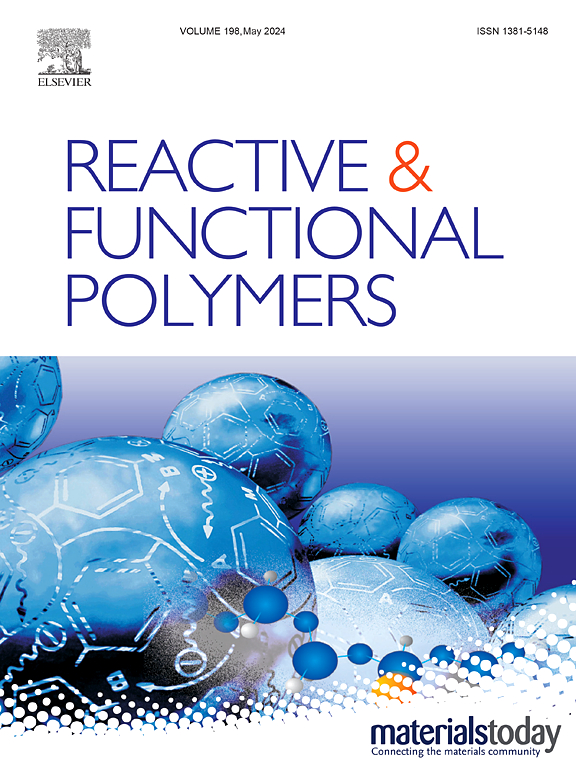通过羧基化纤维素纳米纤维调节微弱的物理相互作用制造粘性水凝胶贴片
IF 4.5
3区 工程技术
Q1 CHEMISTRY, APPLIED
引用次数: 0
摘要
本文章由计算机程序翻译,如有差异,请以英文原文为准。

Fabricated adhesive hydrogel patches via regulating weak physical interactions through carboxylated cellulose nanofibers
Hydrogel has a similar modulus and water content to human tissues, making it an excellent medical material for wound dressings. Currently, hydrogel wound dressings face issues such as unclear mechanisms, complex synthesis processes, chemical reagent toxicity, lack of on-demand bonding, and low mechanical properties, particularly poor adhesion strength. Fabricating highly adhesive hydrogel patches in wet environments remains a challenge. In this work, we have successfully constructed a biosafe PVA@PAA hydrogel by regulating weak physical interactions within the polymer networks, enhancing the adhesion performance of hydrogels to soft tissues. Results indicated that regulating weak physical interactions, such as hydrogen bonding, could significantly enhance the adhesive properties of hydrogels with soft tissues. Incorporating 0.5 wt% C-CNF into PVA@PAA hydrogel resulted in a 181.02 % and 170.97 % increase in adhesive and tensile strength, respectively. PVA@PAA hydrogel exhibited strong adhesion to soft and wet tissues like chicken heart, gizzard, liver, and rabbit kidney. Cytotoxicity assays demonstrated excellent biocompatibility, confirming its suitability as a tissue adhesive. Moreover, due to the hydrogen bond-mediated adhesion mechanism, the adhesive can be removed on-demand using a specific solution after wound healing. This biocompatible, highly adhesive, and detachable hydrogel holds significant potential for clinical wound dressing applications.
求助全文
通过发布文献求助,成功后即可免费获取论文全文。
去求助
来源期刊

Reactive & Functional Polymers
工程技术-高分子科学
CiteScore
8.90
自引率
5.90%
发文量
259
审稿时长
27 days
期刊介绍:
Reactive & Functional Polymers provides a forum to disseminate original ideas, concepts and developments in the science and technology of polymers with functional groups, which impart specific chemical reactivity or physical, chemical, structural, biological, and pharmacological functionality. The scope covers organic polymers, acting for instance as reagents, catalysts, templates, ion-exchangers, selective sorbents, chelating or antimicrobial agents, drug carriers, sensors, membranes, and hydrogels. This also includes reactive cross-linkable prepolymers and high-performance thermosetting polymers, natural or degradable polymers, conducting polymers, and porous polymers.
Original research articles must contain thorough molecular and material characterization data on synthesis of the above polymers in combination with their applications. Applications include but are not limited to catalysis, water or effluent treatment, separations and recovery, electronics and information storage, energy conversion, encapsulation, or adhesion.
 求助内容:
求助内容: 应助结果提醒方式:
应助结果提醒方式:


